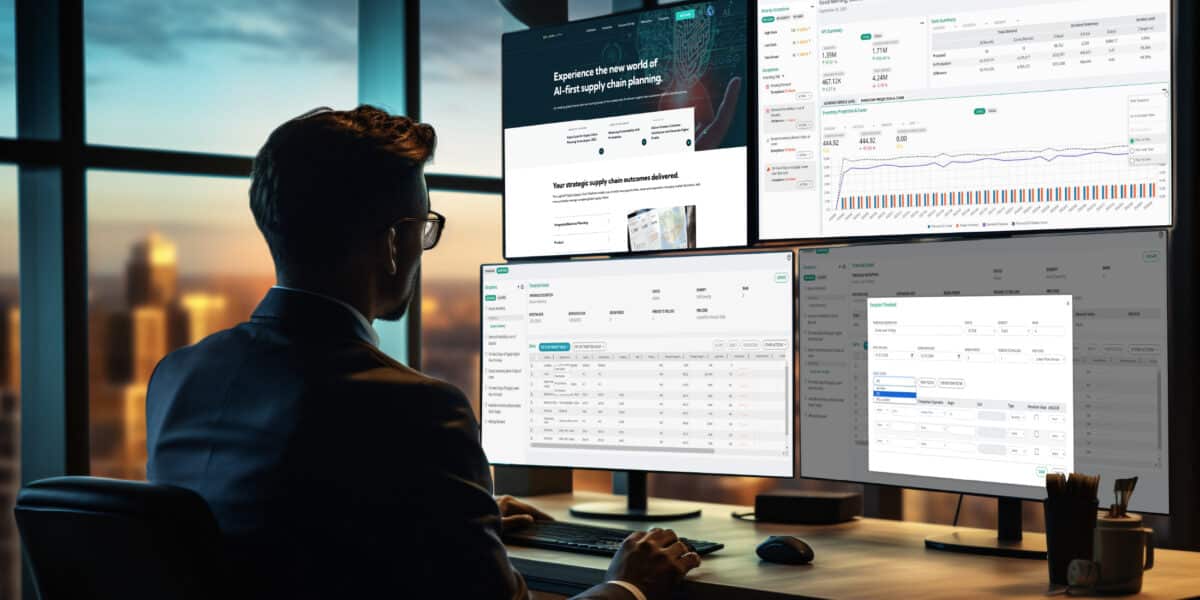
Many business leaders say they can’t afford sustainability initiatives, but looming risks indicate that this is an investment you can’t afford to ignore.
Key takeaways
- Businesses need to prioritize supply chain sustainability
- On average, businesses have over 10 times more greenhouse gas emissions in their supply chains than the rest of their operations
- Businesses should identify areas where they can make small or incremental changes
- In addition to thinking about the cost of implementing initiatives, they should consider the costs associated with the risks they’re avoiding
- Work with an expert to get a sense of the costs of making your supply chain greener and leaner
The business case for sustainability initiatives is strong. Businesses committed to corporate social responsibility (CSR) have a better reputation in the marketplace, but they are also stronger, more flexible, and more resilient on an operational level. When you insist on sustainability in your supply chain, you minimize supply chain disruptions, reduce environmental risks and negative impact, ensure supplier transparency and compliance, and even help strengthen the industries that support your supply chain.
Unfortunately, making your supply chain sustainable isn’t free, and many companies aren’t yet prepared to make the necessary investment. One study indicates that 38% of companies hesitate to adopt sustainability initiatives because of the cost. But at the same time, 34% of respondents said they believed a more sustainable supply chain would help them cut costs.
When budgeting for supply chain sustainability initiatives, think about the cost of solutions, but also the overall impact of these changes on your bottom line.
Prioritize Supply Chain Sustainability
In general, a business’s supply chain is much less sustainable than its operations. On average, supply chain emissions are 11.4 times higher than operational emissions. This is because businesses have historically focused on sustainability in operations while largely ignoring their supply chains.
Contemporary companies are actively looking for ways to cut emissions in regular operations, and failure to keep up with basic expectations can hurt a company’s reputation. But at the same time, they don’t even know what their second- or third-tier suppliers are doing; only 37% of companies say they work with their suppliers to cut emissions.
If sustainability is important to you, you must look beyond your operations and extend your focus to the supply chain. Prioritize this area and ensure that you budget for supply chain sustainability.
Focus on Potential Funds
When deciding on how much to invest in supply chain sustainability initiatives, start with some sample numbers. For example, you may want to devote a percentage of your cost of goods sold (COGS) to sustainability initiatives, or you may want to base your budget on sales volume.
If you’ve been investing money into operational sustainability initiatives, you may be able to transfer some of those budgets to your supply chain. Depending on the business’s financial situation, you may want to retain earnings or reduce dividend payouts to cover the cost of these initiatives.
Small Changes Can Make a Big Difference
Making your supply chain greener and leaner can be expensive and complex. You may want to shake up the whole process and invest in a digital supply chain platform that enables visibility into all tiers of your supply chain.
Keep in mind, however, that you don’t have to do everything at once. Look for smaller, incremental changes like improving efficiency by adjusting the layout of your warehouses. Some sustainability initiatives have a net-zero impact. For example, if you can redesign your packaging in a way that uses fewer materials, you cut the cost of packaging while also becoming more sustainable. Similarly, if you invest money into redesigning the layout of your warehouse, you may discover that you can handle the same job in a smaller facility.
By its very nature, optimizing your inventory will reduce power consumption and total emissions, maximize operations, rationalize warehouse space and improve transportation efficiencies, all in measurable ways. And optimized manufacturing operations will also serve to support new initiatives, but focus initial greening efforts on one or two manufacturing processes like minimizing inventory buffers and movement, or exploring constraint-based planning to use available capacity more efficiently, to eliminate unnecessary set-ups and minimize waste.
Make Changes Incrementally
Find areas where you can make sustainable changes incrementally. For example, if you have your own fleet of delivery trucks, you may want to commit to upgrading the fleet with more efficient models when it’s time to replace your current vehicles. You’re going to have an expense anyway, so plan to make it green.
In that same vein, consider changing the onboarding process when you select a new vendor. You don’t necessarily have to disrupt your current partners, but when you bring on a new supplier, hold them accountable to a new set of green standards. Technology that provides a centralized system to evaluate, manage and report on details of compliance reduces risk, ensures corporate social responsibility and protects your brand. Your supply chain will become more sustainable, and resilient, over time.
Assess the Cost of Unsustainable Risks in Your Supply Chain
When deciding whether or not to implement sustainability initiatives, you cannot just think about the cost of implementation. You also need to consider the costs of not becoming sustainable. In particular, consider the risks of an unsustainable supply chain.
A recent report from CDP indicates that corporate buyers are likely to face $120 billion in costs related to environmental supply chain risks over the next five years. Businesses that embrace supply chain sustainability initiatives minimize these risks and avoid many of the associated costs.
Equally important is protecting your brand and business reputation. If you lack the necessary visibility into your supply chain to fully understand and vet supplier operations, and those suppliers engage in unfair labor practices or environmental injustices, by association your business will be held accountable by your customers. Supply chain traceability allows you critical visibility of your n-tier suppliers.
Contact Logility to talk about making your supply chain more sustainable
One of the reasons businesses struggle to budget for sustainability initiatives is because they don’t know enough about them. They can budget for other projects or initiatives because they understand their costs and impact. To effectively budget for a more sustainable supply chain, reach out to a company that offers supply chain sustainability solutions.
At Logility, we offer the technology and solutions you need to make your supply chain more sustainable. We can review your current set-up and advise you of the best solutions in your situation, and how these solutions will impact your other expenses. Contact us today to modernize your supply chain planning and successfully budget for sustainability.


